Excavation set to begin at 499 President Street, the site of an eight-story residential building in Gowanus, Brooklyn. Designed by SLCE Architects and developed by The Brodsky Organizationwith Avery Hall Investments, the 322,000-square-foot structure will yield 350 rental units in studio to two-bedrooms layouts, with 25 percent designated for affordable housing, as well as 20,000 square feet of ground-floor retail space. Urban Atelier Group is the general contractor for the 1.6-acre property, which is bound by Union Street to the north, President Street to the south, and Nevins Street to the west.
The U-shaped plot wraps around two one-story structures with the longest frontage running along President Street. Recent photos show excavators and piling machines onsite awaiting the start of work.
The main rendering of 499 President Street shows an industrial-inspired design with a series of stepped setbacks topped with terraces leading up to the roof parapet. The façade is composed of white architecturally finished concrete with a horizontally pleated pattern framing a grid of large warehouse-style windows. The property will be surrounded by new tree-lined sidewalks around the commercial frontage and main entrance, with additional greenery lining the glass railings on the edges of the upper terraces. King Contracting Group will be in charge of installing the CMU and stone facade.
Residential amenities will include a lounge with coworking spaces, a private dining room, a game room, a gymnasium and yoga studio, and outdoor rooftop deck and swimming pool. The nearest subway is the R train at the Union Street station to the east along 4th Avenue.
YIMBY last reported that construction will take approximately two years to complete. 499 President Street’s anticipated completion date is slated for February 2025, as posted on site.
Subscribe to YIMBY’s daily e-mail
Follow YIMBYgram for real-time photo updates
Like YIMBY on Facebook
Follow YIMBY’s Twitter for the latest in YIMBYnews

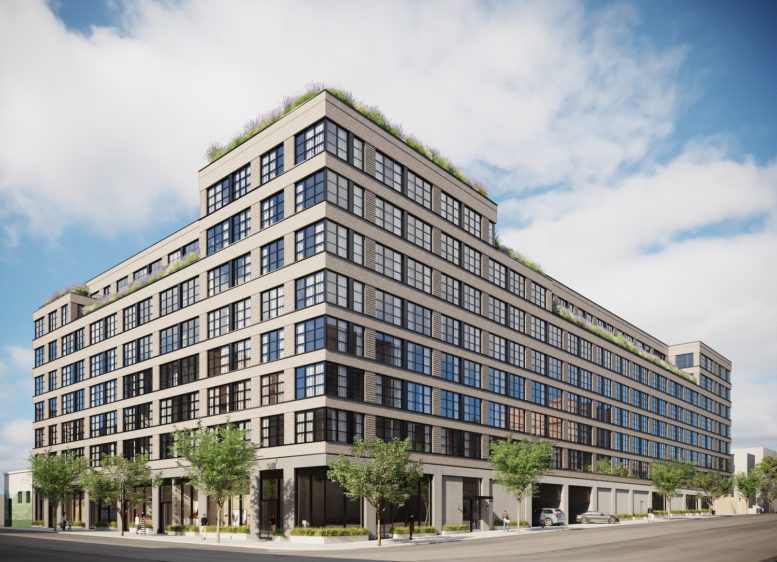
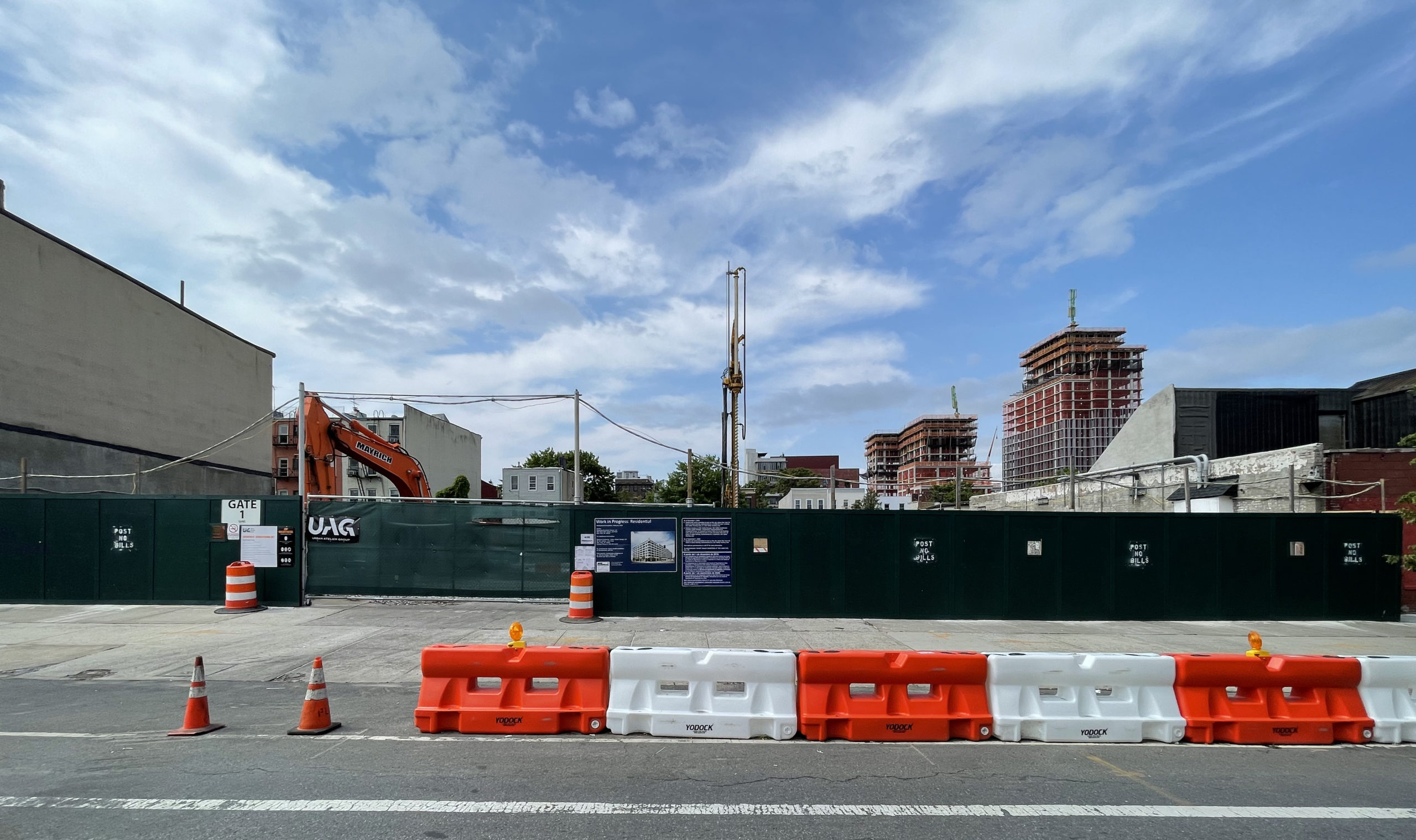

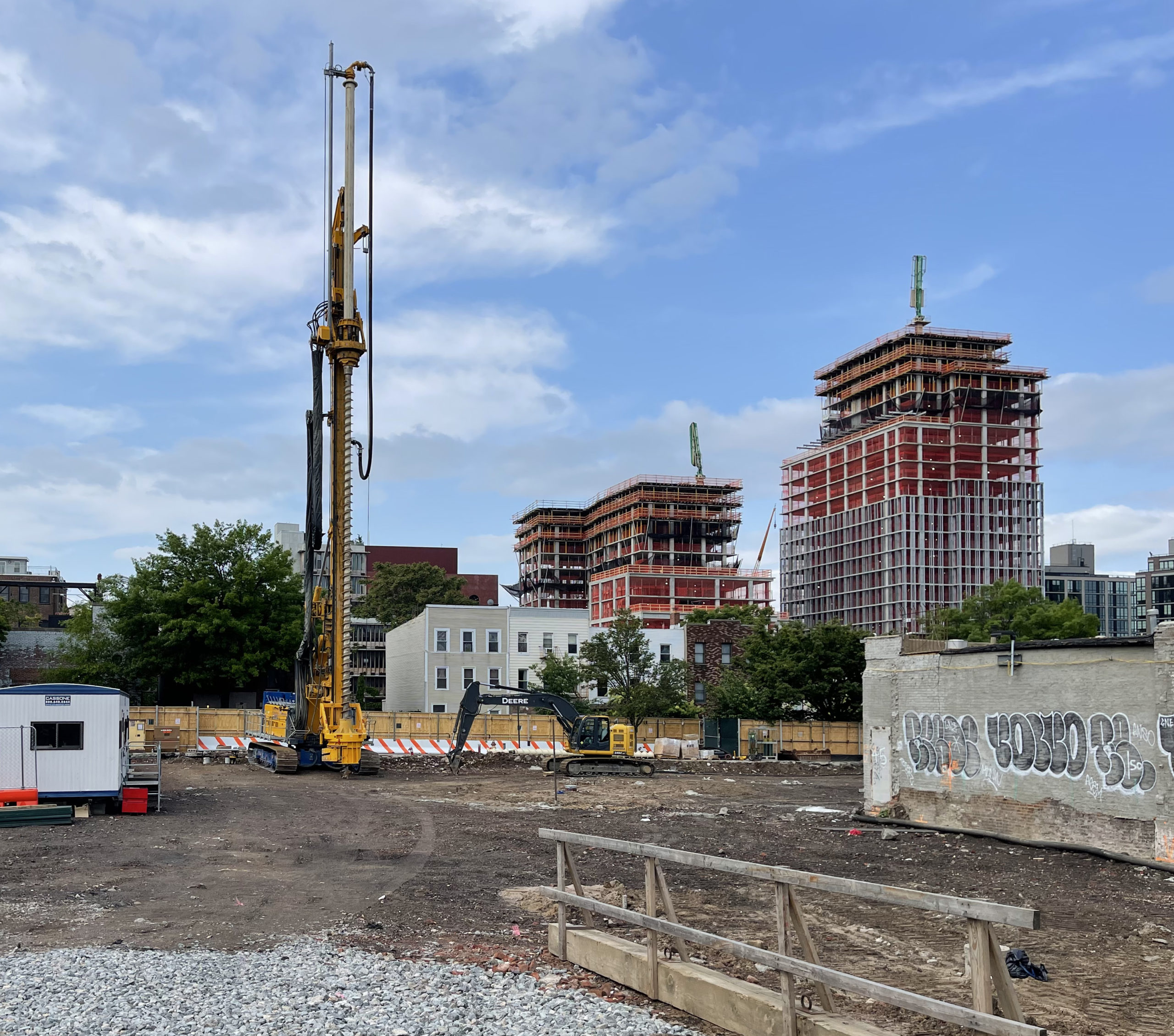
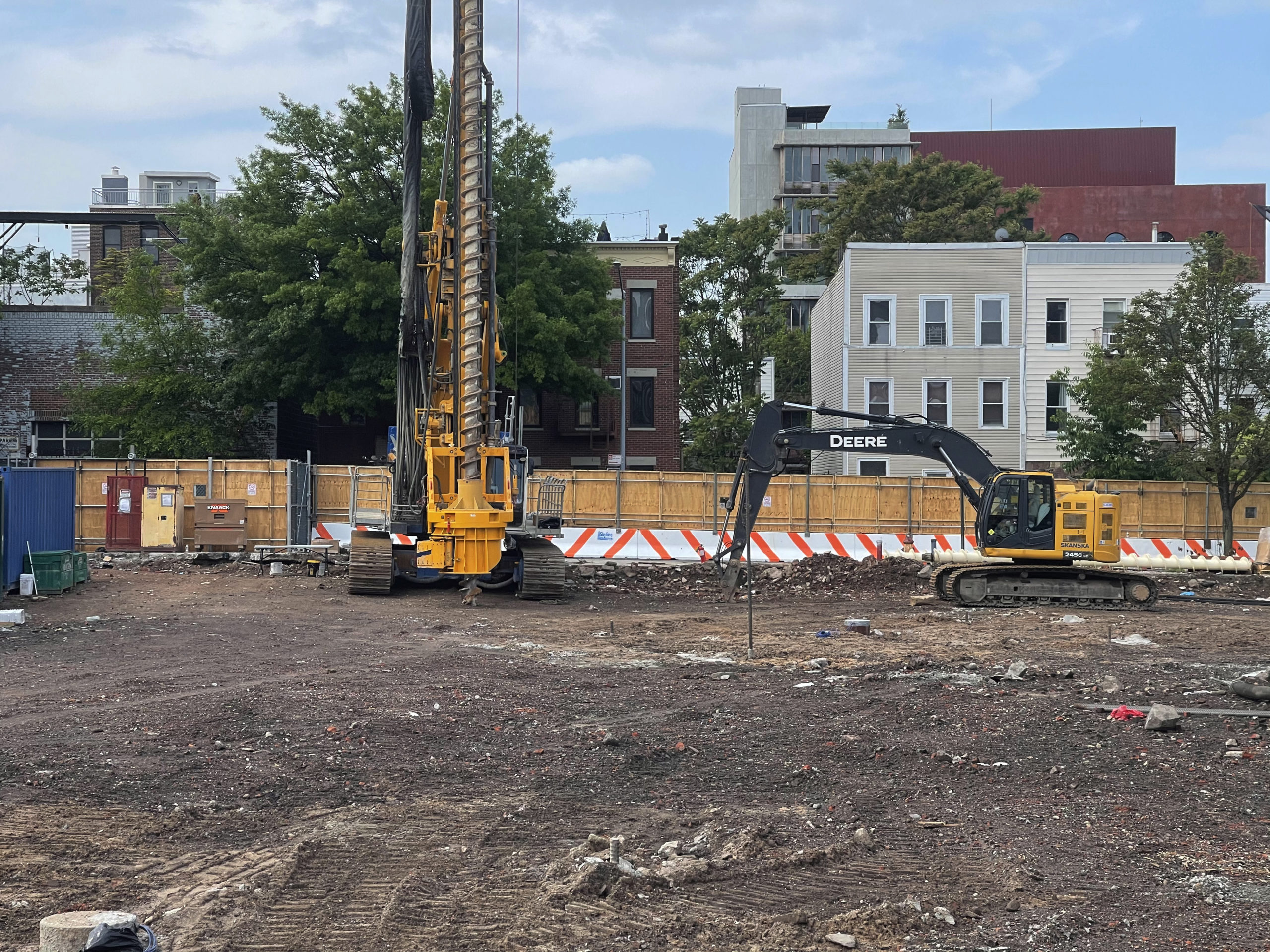
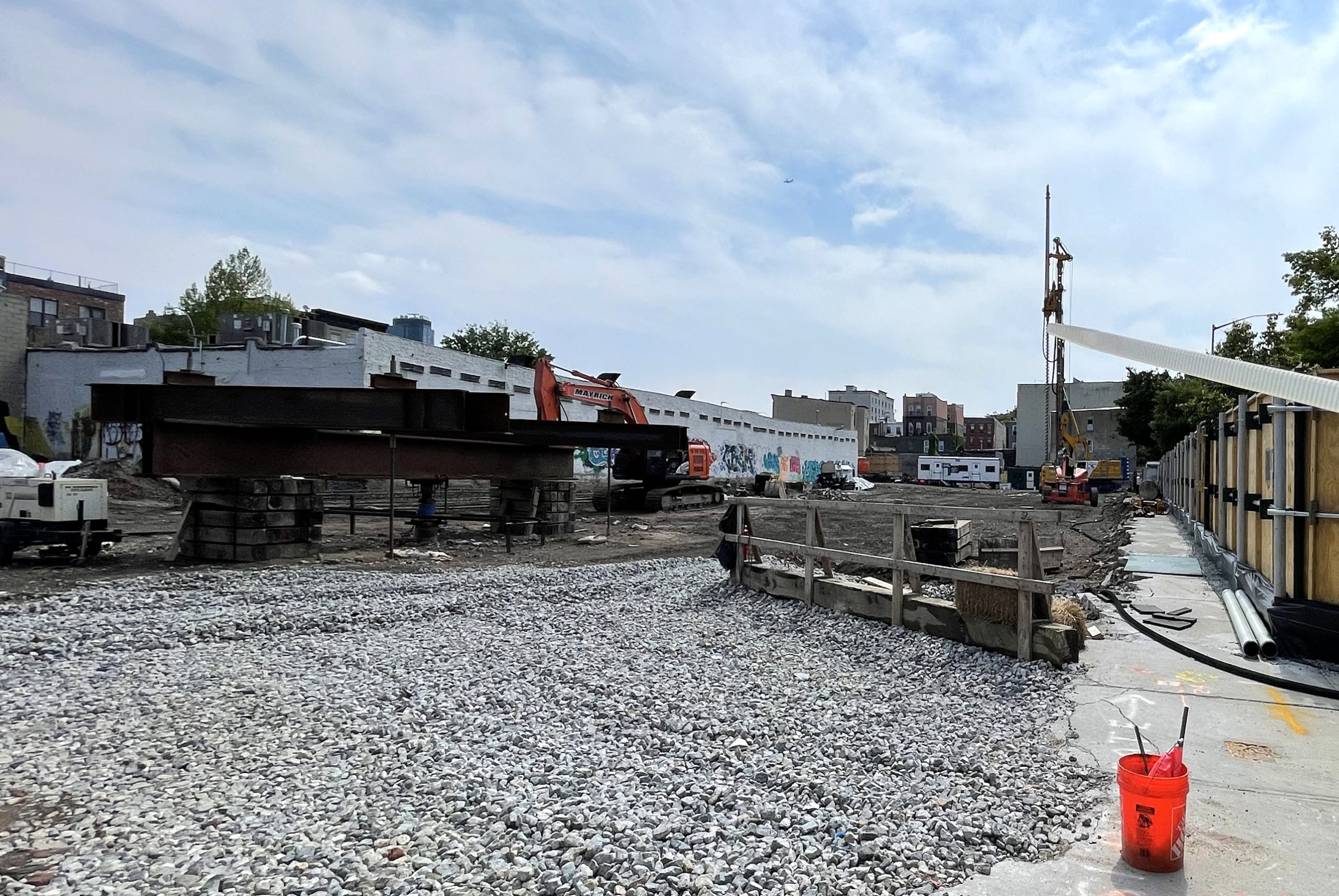
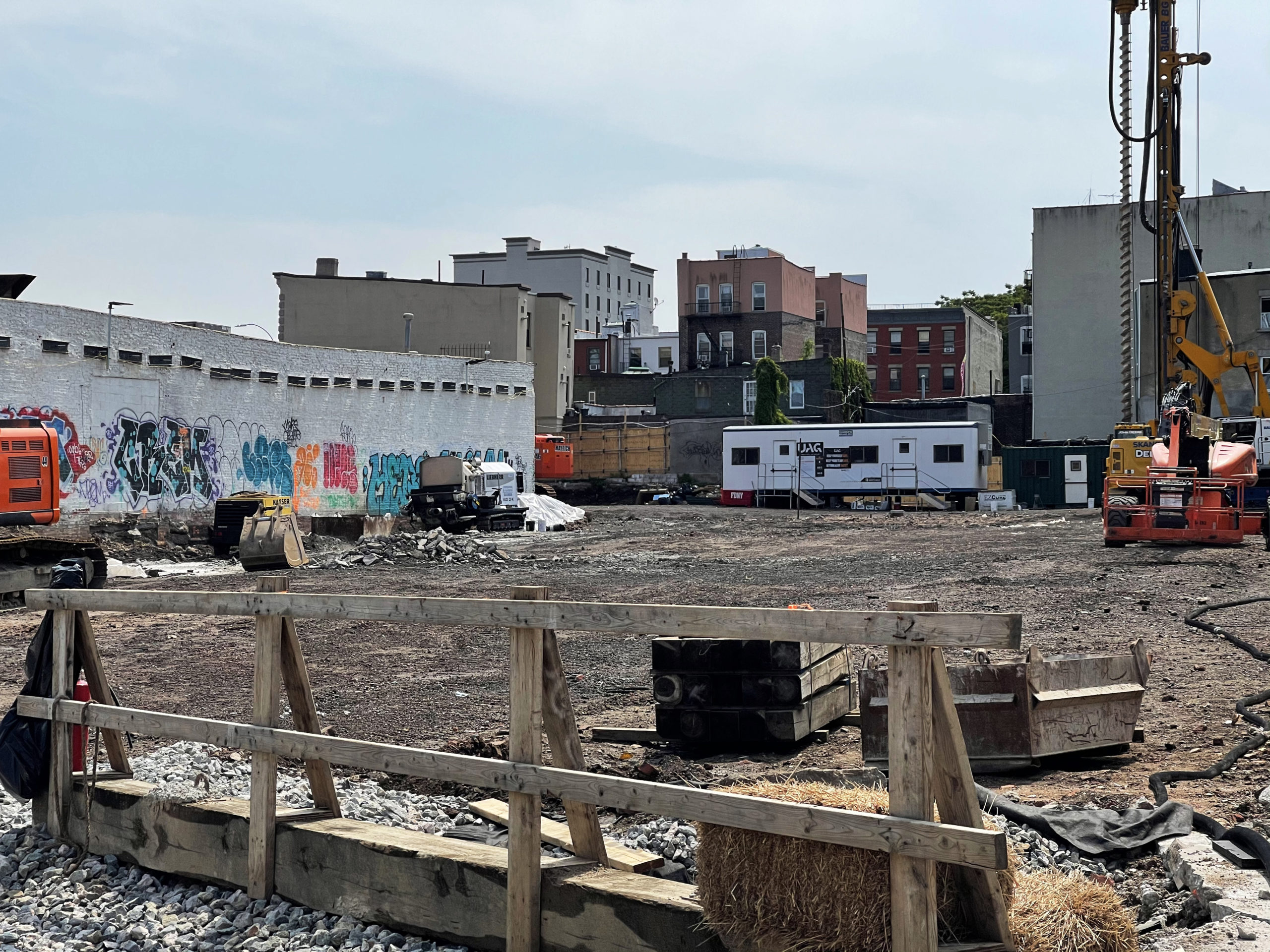
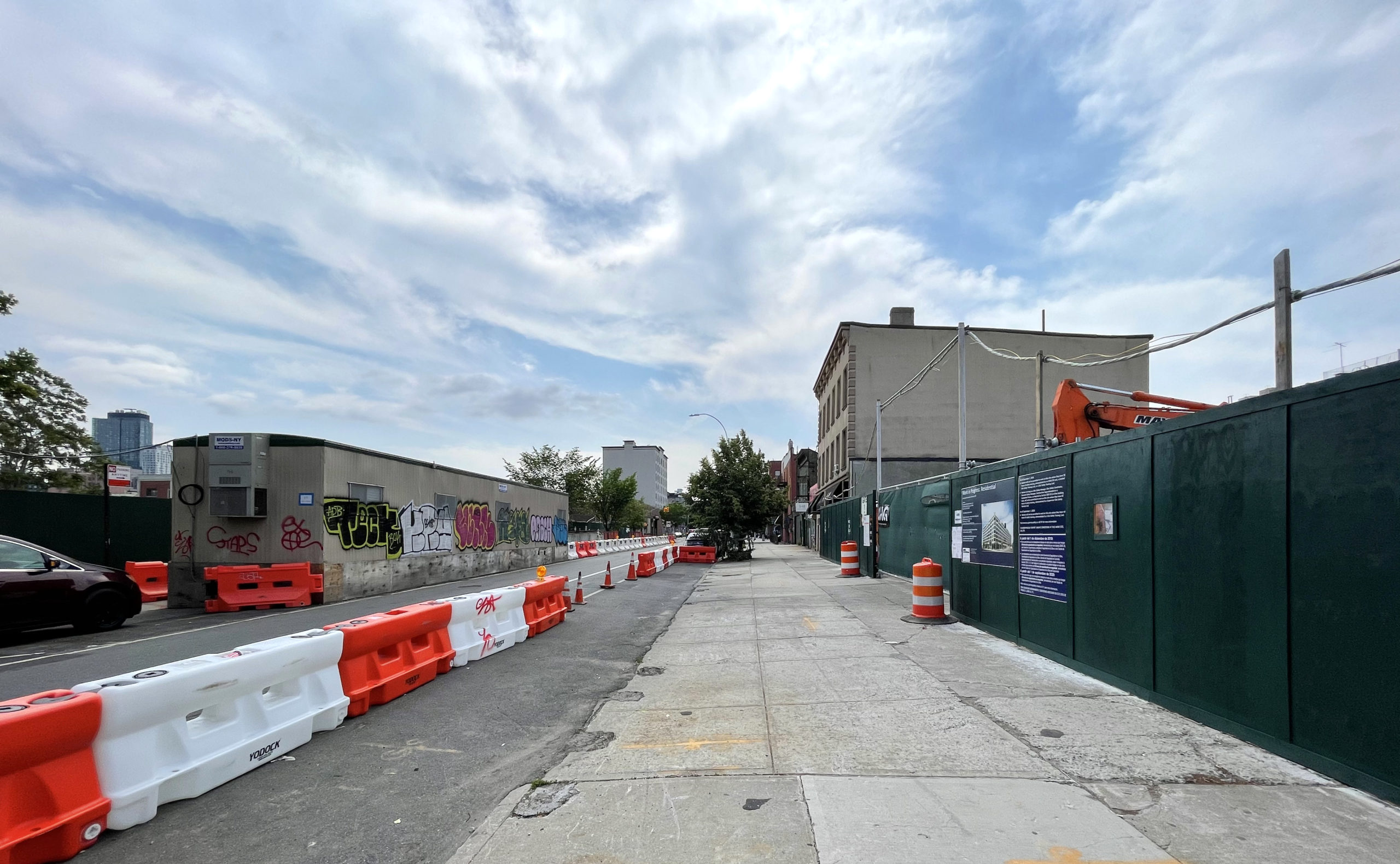

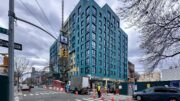


Huh, 3 posts so far about Gowanus!
Is this the new “hip” place to live?
It’s just construction updates going neighborhood by neighborhood
Gowanus 101
What’s Happening in Gowanus?
The Canal
The Gowanus Canal Was Designated a “Superfund Site”
For over a century, the banks of the Gowanus Canal were line with industry and manufacturing companies, which released their toxic waste into the canal water as well into the ground. In 2010, the federal government identified the Gowanus Canal as one of the most toxic waterways in the entire country. It’s filled with toxins that pose serious public health risks. As a result, it was designated a “Superfund” site, and in 2020, the Environmental Protection Agency began a $1.5 billion cleanup of the canal.
The Land
The Gowanus Neighborhood Has Been Rezoned
In 2021, 82 blocks in Gowanus were changed from mainly industrial use to allowing residential development. The existing industrial buildings being demolished in the neighborhood will soon be replaced by dozens of apartment towers reaching up to 30 stories tall.
Most of the Rezoned Land is Highly Toxic
The vast majority of development sites in Gowanus (see map, below) are filled with cancer-causing toxins due to a century of industrial use, and have been classified by NY State as “Brownfield sites.” Some have toxins as deep as 150 feet.
The Infrastructure
Sewage Frequently Flows Into the Canal
During heavy rains, raw sewage flows into the canal because it exceeds the current sewer system’s capacity. As a result, the EPA has demanded that the City build two enormous “retention” tanks to keep excess sewage from going into the canal.
What’s The Problem?
The Land is Not Being Cleaned Up Fully, Leaving Toxins in the Soil
All of these sites need to be cleaned up before residential buildings can be built. State law requires they be cleaned to “pre-disposal conditions”—as they were before industrial poisoning. However, this is NOT happening. For instance, at some sites, where toxins reach as deep as 150 feet, the State is only calling for developers to clean less than the top 8 feet of contaminated soil.
Toxins Left in the Soil Can Enter Buildings And Threaten Future Residents’ Health
The State itself acknowledges that when certain toxins (“volatile organic compounds” or VOCs) are left in the soil, they can “move into buildings and affect the indoor air quality.”
Rather than remove them entirely, the State has decided that on the development sites, these toxins will be covered, or “capped,” with a slab of concrete. This method of dealing with toxic land, known as creating a “vapor intrusion barrier,” is very risky, and is so unreliable that these sites must be monitored every year, in perpetuity, to ensure that dangerous vapors haven’t penetrated people’s residences.
The Most Deeply-Affordable Housing Is Planned for the Most Seriously Toxic Site
Some of the worst contamination can be found at “Public Place,” a City-owned plot at the corner of Smith and Fifth Streets which for decades housed a manufactured gas plant that created waste known as “coal tar.” Exposure to coal tar has been linked to a variety of cancers. Coal tar at this site has been found to a depth of 150 feet.
The cleanup proposed for this site is woefully inadequate, and only the top 8 feet of soil will be cleaned. It is also the only site in the entire rezone where 100% of the 950 apartments target lower incomes, including units for unhoused individuals and seniors. A school has also been proposed for this site.
Placing the lowest-income residents in danger in this way raises Environmental Justice concerns.
Toxins Are Not Confined To Their Original Sites and Threaten the Health of Existing and Future Residents
Large “plumes” of migrating carcinogenic coal tar have already been found far from their original site in Gowanus, and with flooding and rising groundwater levels from climate change, these and other carcinogens can wind up underneath existing homes and intrude into them.
Fumes from the Toxic Construction Sites Pose a Danger to the Community
The disturbance of the land at these toxic construction sites has caused air monitors to be set off by toxic fumes reaching dangerously high levels, with the community not notified and only discovered after kids in the neighboring playground smelled it and reported it to our electeds.
The Gowanus Canal will be Re-Contaminated With Toxins
Without a full cleanup, toxins from the sites surrounding the canal will seep right back into the canal and re-contaminate it, thereby not only wasting $1.5 billion in taxpayer dollars, but also returning the canal to its dangerously toxic state.
Sewage Retention Tanks Are Not Being Built, and Sewage will continue to flow into the canal—and into our homes
The City is not following the EPA’s timeline to build the required retention tanks, and at this point says that they won’t be complete until after 2030. And the retention tanks are only meant to deal with the current number of residents in the community; they don’t take into account the additional sewage that will be produced by 20,000 planned future residents.
Without the required retention tanks, and given increases in rainfall as a result of climate change, sewage will (and has) backed up into people’s homes.
NY Post
State environmental officials waited nearly two years to alert the public that cancer-causing vapors over 20 times the amount considered safe escaped from polluted soil along the Gowanus Canal — and into a nearby shuffleboard club.
The Department of Environmental Conservation learned of the alarming levels of toxic vapors in March 2021 while conducting air-quality tests inside Royal Palms Shuffleboard Club — but the hipster haven remained open throughout, since the agency deemed the century-old building was “safe.”
The agency only documented the stunning finding late last year in public records buried on its website.
On Friday, DEC spokeswoman Haley Viccaro admitted to The Post that it could have done a better job alerting locals to the looming health hazard, and “are evaluating potential improvements to enhance this process and ensure this information is clear and informative of these comprehensive, science-based efforts to protect public health.”
he revelations only came to light thanks to the grassroots group Voice of Gowanus, which hired an Ithaca, N.Y.-based environmental database firm, Toxics Targeting, that recently discovered the damning DEC documents.
The records showed March 2021 air levels of the cancer-causing chemical trichloroethylene, an industrial solvent, were nearly 22 times above acceptable levels at the shuffleboard club.
“The DEC in 2021 should’ve put up signs in the club, published public notices in local papers, and sent mail alerts to people in the neighborhood,” said Walter Hang, who heads Toxics Targeting. “All they did was make obscure references in dense technical documents regular citizens wouldn’t know about or can’t decipher.”
Construction has officially begun on the first of two tanks that will be able to hold a combined 12 million gallons of wastewater.
The goal is to prevent severe flooding and further pollution of the canal.
“These storms are going to continue coming. Climate change is here and the storms are going to become more frequent,” said Martin Bisi, a local business owner and member of the grassroots organization Voice of Gowanus. He says the city’s $1.6-billion-dollar project falls short.
“It’s not enough to take care of the environmental problems in Gowanus,” said Bisi. “It does not address the profound contamination that we have in the sites around the canal.”
Gowanus has seen a surge in residents in recent years and thousands more are expected to arrive in the near future The Gowanus rezoning, which was approved in 2021, will add roughly 8,000 new housing units to the neighborhood.
“These tanks won’t be built until 2030 and in the meantime, they’ll continue building this housing that will bring more residents in and tens of thousands of toilets, and right now it doesn’t take much rain for the sewer system to go over capacity,” said Bisi.
This project follows a years-long struggle to clean up the canal after the Environmental Protection Agency designated it a “Superfund site” in 2010.
Bisi says the only way to keep residents safe from harmful toxins is to restore the canal to pre-contamination conditions.
“Full comprehensive cleanup of all of the worst sites and there’s many of them. There’s up to 30. And of course, that means halting construction on those sites fully,” he said.
SLCE got this one right.
This looks more appropriate for the neighborhood and love the concrete exterior
I really hope they bring truly affordable housing to this new hot spot, which is desperately needed in that area, which could help all incomes levels from the lowest to the low, moderate and so fourth, we will see
no affordable housing,
only INCOME LINKED HOUSING for upper income people .
Each development has gone through rigorous environmental review and testing under strict supervision of the state EPA. Wouldn’t be able to build without succesfully meeting the state mandated threshold.
The tree hugging NIMBY’s on this site can’t accept economic progress in their backyard. NIBY’s be gone!
Please tell that to Guesser, who keeps copying and pasting the same long text in every project site in Gowanus. So annoying how his comments spam the comment section nowadays and Yimby ought to mitigate it
Hey James
you have an intelligent thought or observation to the disastrous Gowanus rezoning or do you just want to make personal comments about me?
Hey YIBY’S
You ever hug a Tree?
try proof reading your post before posting.
It will make you look more intelligent when you comment
From Yimby’s favorite rag the
NY Post
State environmental officials waited nearly two years to alert the public that cancer-causing vapors over 20 times the amount considered safe escaped from polluted soil along the Gowanus Canal — and into a nearby shuffleboard club.
The Department of Environmental Conservation learned of the alarming levels of toxic vapors in March 2021 while conducting air-quality tests inside Royal Palms Shuffleboard Club — but the hipster haven remained open throughout, since the agency deemed the century-old building was “safe.”
The agency only documented the stunning finding late last year in public records buried on its website.
On Friday, DEC spokeswoman Haley Viccaro admitted to The Post that it could have done a better job alerting locals to the looming health hazard, and “are evaluating potential improvements to enhance this process and ensure this information is clear and informative of these comprehensive, science-based efforts to protect public health.”
he revelations only came to light thanks to the grassroots group Voice of Gowanus, which hired an Ithaca, N.Y.-based environmental database firm, Toxics Targeting, that recently discovered the damning DEC documents.
The records showed March 2021 air levels of the cancer-causing chemical trichloroethylene, an industrial solvent, were nearly 22 times above acceptable levels at the shuffleboard club.
“The DEC in 2021 should’ve put up signs in the club, published public notices in local papers, and sent mail alerts to people in the neighborhood,” said Walter Hang, who heads Toxics Targeting. “All they did was make obscure references in dense technical documents regular citizens wouldn’t know about or can’t decipher.”
Says the man that misspelled the acronym YIMBY and the verb “proofreading” wrong. How hypocritical of you Guesser
Now I sip my tea and kick back while waiting to hear your explosively cantankerous response like you’ve do to everybody…
Mr. ferguson,
I was imitating jason’s prior post , I purposely misspelled
“The tree hugging NIMBY’s on this site can’t accept economic progress in their backyard. NIBY’s be gone”You need to lighten up and try commenting about the article with facts instead of posting about me personally.Do you have Any opinion on the disastrous Gowanus Rezoning pushed by DeBlasio and Brad Lander that can lead to a healthy discussion ?